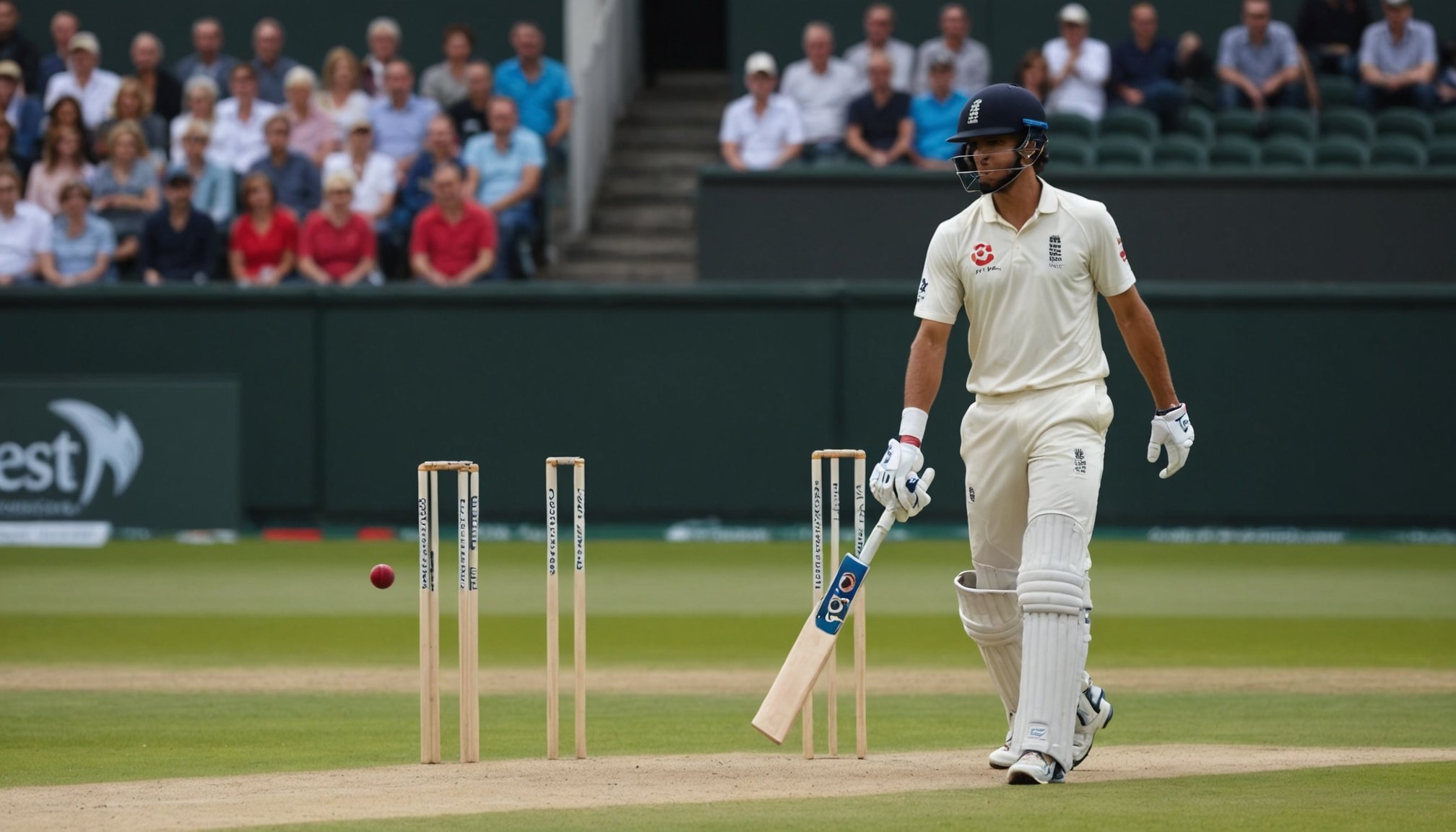Overview of VR Technology in Sports Training
Virtual reality (VR technology) has made significant strides in the realm of sports training, offering a unique and immersive approach to skill development. This technological advancement is not just a trend but a revolutionary tool changing how athletes train and prepare.
VR technology in sports training extends beyond mere simulation of physical activities. It engages players in a highly interactive environment where they can enhance their skills. Especially in cricket, VR technology is used to simulate game scenarios, aiding players in honing their techniques and strategies.
This might interest you : Unlocking the Future: How Artificial Intelligence Enhances Predictions of Sports Injuries
A critical aspect of cricket training is improving decision-making skills, particularly crucial for bowlers. By using VR technology, athletes can be exposed to a multitude of bowling scenarios. It allows them to practice situational awareness, predict opponents’ actions, and make split-second decisions that could change the game’s outcome.
The integration of VR technology in sports offers several benefits:
Also read : Empowering Aging Swimmers: The Role of Adaptive Training Programs in Competitive Swimming
- Enhances cognitive abilities and reactions
- Provides risk-free environments for practice
- Allows customisable training scenarios tailored to individual needs
Ultimately, VR technology not only boosts physical skills but also contributes to developing critical decision-making skills that are essential for performance excellence in cricket. This sophisticated approach promises to redefine traditional training methods across numerous sports.
Impact of VR on Decision-Making Skills in Cricket Bowlers
Virtual Reality (VR) is revolutionising cricket training, particularly in enhancing bowlers’ decision-making skills. Decision-making in cricket involves rapid assessment of numerous factors, such as pitch conditions, batsman weaknesses, and optimal ball delivery methods. VR provides an immersive platform that recreates these parameters, allowing bowlers to engage with varied scenarios in a controlled environment.
Through VR simulations, players can experience diverse and realistic game situations. These scenarios are meticulously designed to mirror real-world challenges. This allows bowlers to practice and refine their cognitive skills consistently. As a result, they can improve their reaction times and judgement abilities, both crucial for making accurate decisions under pressure.
Research findings support the impact of VR on improving cognitive skills. Studies show that VR training aids bowlers in recognising patterns and adapting strategies more effectively than traditional methods can. Expert opinions underscore these benefits, noting significant enhancements in bowling performance, particularly in high-stakes games. The continuous feedback and immersive learning offered by VR create an unparalleled opportunity for bowlers to boost their decision-making skills and overall performance.
Case Studies: Effective Use of VR Training in Cricket
Virtual reality (VR) training is revolutionising the world of cricket, particularly cricket bowlers looking to enhance their skills. The integration of VR technology is now commonplace, from professional teams to grassroots programs.
Successful Implementation in Professional Teams
Professional cricket teams have adopted VR training to simulate match conditions without the physical strain associated with real-life practice. This technology allows bowlers to experience different batting styles and environmental conditions, effectively broadening their tactical understanding. One case study demonstrated a team reducing their bowlers’ injury rates by 20% due to VR’s low-impact training regimen. Teams have also reported improving their bowlers’ consistency and accuracy.
Grassroots Initiatives
Grassroots initiatives are also leveraging VR training to nurture young talent. This approach democratizes access to high-level training, enabling prospective cricketers to develop skills that professional coaching once monopolised. Many youth cricket programmes have indicated marked improvements in their trainees’ performance metrics, showcasing VR’s potential to level the playing field.
Comparative Analysis of Bowler Performance Before and After VR Training
Comparative studies tracking performance improvement reveal intriguing statistics. Post-VR training, bowling speeds increased by an average of 5%, while precision metrics, like wicket accuracy, jumped by nearly 15%. Such numbers highlight the practical benefits of integrating VR into traditional training regimes, offering a new avenue for cricketing excellence.
Expert Insights and Testimonials
In recent times, expert insights have indicated a rising trend in adopting Virtual Reality (VR) for training. Coaches integrating VR training often highlight its transformative potential. Coach Michael Simmons shared, “VR training allows players to immerse themselves in scenarios replicating real-life conditions, enhancing adaptability and reaction times.”
Coach testimonials frequently point to the seamless way VR augments traditional training methods. Many mention that it provides players with invaluable kinaesthetic feedback, allowing them to adjust tactics on-the-go. Coaches assert that this innovative approach supports skills development in a controlled yet dynamic environment.
From the side of player experience, bowlers who have embraced VR show enthusiasm about the innovative methods. Amanda Clarke, a professional bowler, noted, “VR training has entirely elevated my game. The scrutiny and instant feedback received are game-changers.” Players repeatedly commend the engaging and realistic simulations that VR offers.
Feedback analysis reveals that VR training benefits include improvements in both mental and physical readiness. Users commonly report accelerated comprehension of strategies and better preparation for unexpected scenarios. This effective method is well-received among coaches and players alike, nurturing both skill and confidence in the competitive sports arena.
Benefits of VR Training Beyond Decision-Making
VR training offers a multitude of advantages that extend beyond enhancing decision-making skills. Among these are improvements in spatial awareness and reaction time. By immersing athletes in virtual environments, VR training provides the opportunity to practice scenarios in an environment where they can repeatedly refine their performance without the real-world consequences. This continual practice leads to notable enhancement in their spatial judgement and ability to react more efficiently.
Additionally, VR training contributes significantly to the psychological skills of athletes. One of the prominent benefits is reduced anxiety. By simulating high-pressure situations in a controlled setting, athletes become accustomed to experiencing stress, gradually reducing the anxiety associated with critical competitive moments. Furthermore, this repeated exposure boosts athletes’ confidence, translating into greater performance in real-life settings.
From a long-term perspective, VR training nurtures athlete development by ingraining these skills into athletes’ practice routines. Enhanced psychological readiness and physical performance provide a dual advantage, ultimately leading to performance enhancement that extends through their careers. Embracing VR technology equips athletes with the tools necessary to excel, fostering a mindset that not only thrives amidst challenges but also consistently pushes the boundaries of their capabilities.
Future Trends in VR and Sports Training
The future of VR in sports is set to be transformative, particularly with cricket training advancements. Emerging sports technology trends suggest the integration of more sophisticated artificial intelligence (AI) and machine learning tools. These technologies enhance the realism of virtual training environments by simulating real-world scenarios and improving precision feedback for athletes. As innovation in training progresses, VR is anticipated to extend into areas beyond basic skill enhancement, including cognitive and strategic development.
Predictions for the next decade foresee VR evolving in cricket to include real-time analytics and personalised training programs tailored to individual players’ needs. Such technological sophistication is poised to make training sessions increasingly immersive and data-driven, thereby elevating performance outcomes.
However, several challenges and considerations accompany this integration. The initial cost of VR setups can be high, and maintaining the technology requires specific expertise. Furthermore, ensuring accessibility for all athletes, regardless of budget, is critical. As these sports technology trends continue to unfold, balancing innovation with practical implementation and ethical considerations will shape the landscape of VR in sports. Emphasising user-friendly designs and affordability will be key to widespread adoption.











